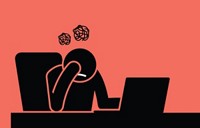Advertisement
Grab your lab coat. Let's get started
Welcome!
Welcome!
Create an account below to get 6 C&EN articles per month, receive newsletters and more - all free.
It seems this is your first time logging in online. Please enter the following information to continue.
As an ACS member you automatically get access to this site. All we need is few more details to create your reading experience.
Not you? Sign in with a different account.
Not you? Sign in with a different account.
ERROR 1
ERROR 1
ERROR 2
ERROR 2
ERROR 2
ERROR 2
ERROR 2
Password and Confirm password must match.
If you have an ACS member number, please enter it here so we can link this account to your membership. (optional)
ERROR 2
ACS values your privacy. By submitting your information, you are gaining access to C&EN and subscribing to our weekly newsletter. We use the information you provide to make your reading experience better, and we will never sell your data to third party members.
Employment
Bench & Cubicle
Chemjobber discusses how to send a cold email
Lessons from Anthony Fauci’s pandemic correspondence
by Chemjobber, special to C&EN
July 18, 2021
| A version of this story appeared in
Volume 99, Issue 26

The cold email is one of the great stress-inducing rituals of life, or at least my life. I’ve been known to delay writing an email for days, if not weeks or months, even to people that I like or know well. I recall being a graduate student and writing a couple of cold emails to potential postdoctoral advisers, and I felt very awkward. Striking the right tone and using the best phrasing are difficult, especially when you may not know exactly what you want or how to say it.
Now I work in the chemistry enterprise, and cold emailing is still a necessary skill. You can avoid emailing people by just walking down the hall (which I prefer—if you don’t work with a colleague often, it’s easier to read their face than interpreting their tone in an email). But when you need to ask your customer’s senior management a tough question, or when you’re searching for a new collaborator or even a new customer, you must write that first awkward message.
To get some inspiration for writing cold emails, I looked at emails that reporters, scientists, and laypeople sent Anthony Fauci in March and April 2020—near the beginning of the COVID-19 pandemic. BuzzFeed News obtained the emails through a Freedom of Information Act request.
Fauci is the director of the US National Institute of Allergy and Infectious Diseases, and many in the US see him as the government’s authority on COVID-19 science and medicine. In the thousands of messages sent to him, people asked questions to try to comprehend the virus and make plans. Those emails provide a wonderful tutorial in how to ask questions of a busy, important person in a way that will get a response.
Many of the emails Fauci answered were short with clear requests. In the case of news media, successful email inquiries from reporters and producers were consistently just four to five sentences long and included the reporter’s outlet, the topic, and an interview request, often with potential interview time periods. This shows that if you have a simple request for potential employers or collaborators, it’s best to briefly introduce yourself and get to the point. If your email begins to ramble, work to make it more succinct before you send it.
If you must write a longer email, organization is key. For example, internal emails to Fauci to coordinate teleconference discussions between various agency heads included detailed agendas and key bullet points. If there was something that needed to be addressed by a specific person, their name was often bolded. If you have a similar email with several items to discuss, try using analogous formatting and organization to ensure your email gets a positive response. Longer emails often work well for a proposed collaboration with a large group, and an organized email can help provide structure for future discussions and goals.
Fauci’s emails also included examples of cold-email formats to avoid. He received many messages from fellow physicians and scientists arguing for their favored treatment or protocol for COVID-19, and I was surprised at how many people copied and pasted the text of their scientific article into their email. I’m sure we have all cringed at an email that is simply a wall of text, and the temptation to ignore or delete such messages is always high, especially when you’re facing an inbox that is very full and continuing to grow. Multiple links or attachments are also daunting to a busy reader. In many of these cases, Fauci forwarded the message to a colleague, often with a short “Please handle.” I imagine that the response from his colleague was a polite rejection.
I still find it stressful to write cold emails, but I’ve also grown to enjoy them as an opportunity to start a new relationship in which you believe mutual benefit will grow out of your initial communication. By sending messages that are clear, as brief as possible, and well organized, you show respect for the recipient’s time, and that respect will often be reciprocated. Yes, it is possible that your correspondent will be so busy that they won’t be able to help you—as Fauci frequently was not—but setting that good first impression may help you with future requests.
Chemjobber is an industrial chemist who blogs about the chemistry job market at chemjobber.blogspot.com. Find all his columns for C&EN and suggest future topics at cenm.ag/benchandcubicle.
Views expressed are those of the author and not necessarily those of C&EN or ACS.





Join the conversation
Contact the reporter
Submit a Letter to the Editor for publication
Engage with us on Twitter